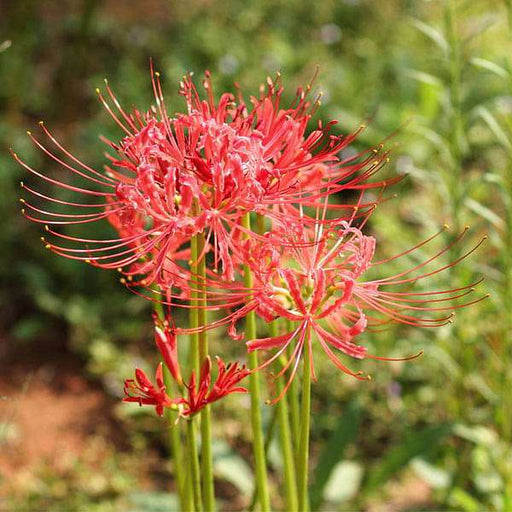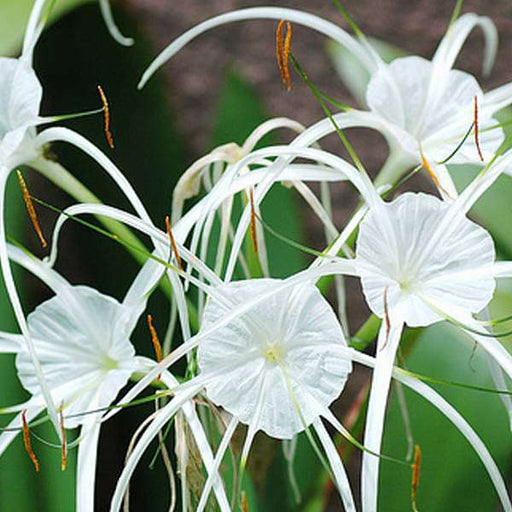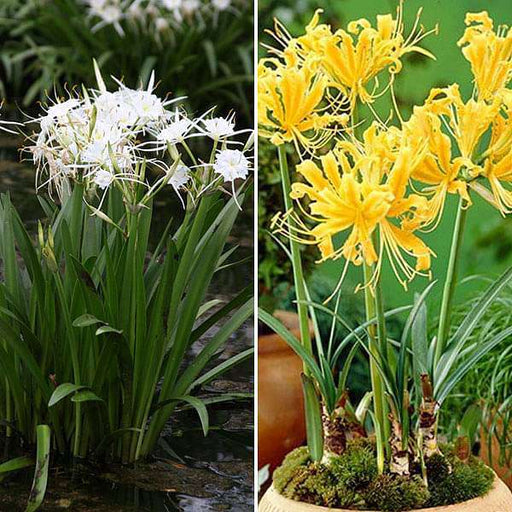Spider Lily Care
Spider lilies require special care to keep them healthy and vibrant. This includes providing the right amount of water, sunlight, and nutrients, as well as monitoring for pests and diseases. With the right care, spider lilies can thrive and produce stunning displays of unique and eye-catching blooms.
Spider Lily Varieties
There are several varieties of spider lilies, each with their own unique blooms and foliage. Some popular varieties include the red spider lily, the white spider lily, and the pink spider lily. With so many options to choose from, there is a spider lily variety to suit any taste and style.
Spider Lily Bulbs
Spider lilies grow from bulbs, which can be planted in the fall for blooms in the spring. They should be planted in well-draining soil and kept moist until they start to sprout. With the right care, spider lily bulbs can produce healthy and vibrant plants.
Spider Lily Meaning
Spider lilies have a rich and interesting history, and have been associated with a variety of meanings and symbolism over the years. In general, they are a symbol of death and rebirth, and have been used in traditional Japanese and Chinese funerary customs. With their long and fascinating history, spider lilies are a charming and inspiring choice for any gardener or flower lover.
Spider Lily Propagation
Spider lilies can be propagated through division, which involves separating the bulbs into smaller sections. With the right propagation techniques, spider lilies can produce healthy and vibrant new growth.
Spider Lily Sunlight
Spider lilies require partial to full sunlight for optimal growth and health. They should be planted in a well-lit area with plenty of direct or indirect sunlight. With the right amount of sunlight, spider lilies can produce stunning displays of unique and eye-catching blooms.
Spider Lily Watering
Spider lilies require frequent watering to keep the soil moist, but not waterlogged. Water should be allowed to fully drain from the soil before watering again. With the right watering schedule, spider lilies can produce stunning displays of unique and eye-catching blooms.
Spider Lily Pests and Diseases
Spider lilies are susceptible to a variety of pests and diseases, including spider mites, aphids, and fungal infections. Proper care and monitoring can prevent these issues from becoming a problem. With the right pest and disease control measures, spider lilies can thrive and produce stunning displays of unique and eye-catching blooms.
Spider Lily Meaning in Japan
In Japan, spider lilies are associated with death and the afterlife, and are often planted near graves or used in funerary ceremonies. Despite this association, they are also admired for their unique and eye-catching blooms, which are seen as a symbol of hope and rebirth.
Spider Lily Meaning in China
In China, spider lilies are associated with the Mid-Autumn Festival, and are often used as decorations during this holiday. They are also associated with the moon, and are said to bloom only at night, adding to their mystical and magical qualities.
Spider Lily Folklore
Spider lilies have been a popular subject in folklore and mythology throughout history. In some cultures, they are believed to be the reincarnation of the dead, while in others, they are seen as a symbol of love and longing. With their rich and fascinating history, spider lilies are a charming and inspiring choice for any gardener or flower lover.
Red Spider Lily
The red spider lily is a popular variety of spider lily, known for its vibrant and eye-catching blooms. Its flowers are bright red and shaped like spider legs, with long, thin petals that curve and twist. With their bold and striking appearance, red spider lilies are a popular choice for gardens and flower arrangements.
White Spider Lily
The white spider lily is a stunning variety of spider lily, known for its delicate and elegant blooms. Its flowers are pure white and shaped like spider legs, with long, thin petals that curve and twist. With their graceful and ethereal appearance, white spider lilies are a popular choice for weddings and other formal events.
Pink Spider Lily
The pink spider lily is a beautiful and romantic variety of spider lily, known for its soft and delicate blooms. Its flowers are pale pink and shaped like spider legs, with long, thin petals that curve and twist. With their charming and feminine appearance, pink spider lilies are a popular choice for gardens and flower arrangements.
Spider Lily Tattoo
Spider lilies are a popular subject for tattoos, with their unique and eye-catching blooms making for stunning and symbolic body art. They are often used as a symbol of death and rebirth, as well as beauty and grace. With their long and fascinating history, spider lilies are a popular choice for tattoo enthusiasts.
Spider Lily Arrangements
Spider lilies make for stunning and unique flower arrangements, with their long, thin petals and unusual shape adding a touch of exotic elegance to any bouquet. They are often paired with other exotic flowers, such as orchids or bird of paradise, for a truly breathtaking display.
Spider Lily Garden
A spider lily garden is a unique and exotic choice for any gardener, with their unusual and eye-catching blooms adding a touch of drama and intrigue to any outdoor space. They can be planted in rows or clusters, and paired with other exotic plants for a truly breathtaking display.
Spider Lily Meaning in Korea
In Korea, spider lilies are associated with ghosts and the afterlife, and are often used in traditional funerary rituals. Despite this association, they are also admired for their unique and eye-catching blooms, which are seen as a symbol of hope and renewal.
Spider Lily Meaning in Taiwan
In Taiwan, spider lilies are associated with the Mid-Autumn Festival, and are often used as decorations during this holiday. They are also associated with luck and prosperity, and are said to bring good fortune to those who plant them.
Spider Lily Meaning in the South
In the southern United States, spider lilies are a popular and beloved flower, with their bright and bold blooms adding a touch of whimsy and charm to gardens and flower beds. They are often used in floral arrangements and bouquets, and admired for their unique and unusual shape.
















































